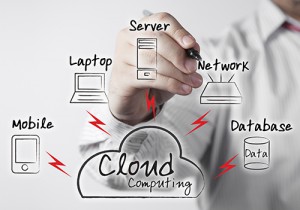 The political season in the U.S. is now in full swing and I had to smile at a recent article about a security breach of a Democratic National Committee server and the alleged theft of background information on the Republican candidate, Donald Trump. For a moment I thought I had slipped back to 1972 when a break-in and attempted wiretap occurred at the Watergate hotel and office complex where the Democratic Committee was headquartered. The more things change, the more they stay the same. In this case though, the technology has evolved from breaking, entering, and wiretapping to sophisticated digital entry to specific servers. Let’s take a look at the evolution of technology in terms of security.
The political season in the U.S. is now in full swing and I had to smile at a recent article about a security breach of a Democratic National Committee server and the alleged theft of background information on the Republican candidate, Donald Trump. For a moment I thought I had slipped back to 1972 when a break-in and attempted wiretap occurred at the Watergate hotel and office complex where the Democratic Committee was headquartered. The more things change, the more they stay the same. In this case though, the technology has evolved from breaking, entering, and wiretapping to sophisticated digital entry to specific servers. Let’s take a look at the evolution of technology in terms of security.
1972
I followed the Watergate scandal closely even though I was only a teenager. Members of the “committee to re-elect the president” were found to have masterminded a break in into the Watergate office building to plant wiretaps on the phones of key members of the Democratic Committee. Several players were indicted and sentenced to prison and President Nixon eventually resigned under suspicion of having authorized the break-in and for keeping secret recordings. When the Watergate burglars were caught, they were found with:
“… at least two sophisticated devices capable of picking up and transmitting all talk, including telephone conversations. In addition, police found lock-picks and door jimmies, almost $2,300 in cash, most of it in $100 bills with the serial numbers in sequence.
The men also had with them one walkie-talkie, a short wave receiver that could pick up police calls, 40 rolls of unexposed film, two 35 millimeter cameras and three pen-sized tear gas guns.”
2016
Fast forward almost 45 years and consider the modern tools of the burglary/cyber espionage trade. No longer is it necessary to even be near a physical building; a lucrative break-in can be done from anywhere. As of this writing, it is believed that hackers linked to the Russian government broke into the Democratic National Committee servers, presumably while in Russia. Whether that can ever be substantiated or whether the individuals behind the break-in will ever be brought to justice is doubtful. Part of the hacking ethos is to cover digital tracks through multiple systems and connections so as to mask the hacker’s identity.
Thoughts
Catching five burglars with wiretapping equipment in an office building was a piece of cake compared to what law enforcement faces today. The stakes are higher in terms of the information stores that we keep and the break-in methods are much more sophisticated. The tools needed to track and prevent a strike are complicated and require advanced education and skills. As long as we continue to have security breaches, both in politics and business, organizations of all types will seek qualified professionals. The more things change, the more they stay the same.
Kelly Brown is an IT professional and assistant professor of practice for the UO Applied Information Management Master’s Degree Program. He writes about IT and business topics that keep him up at night.












